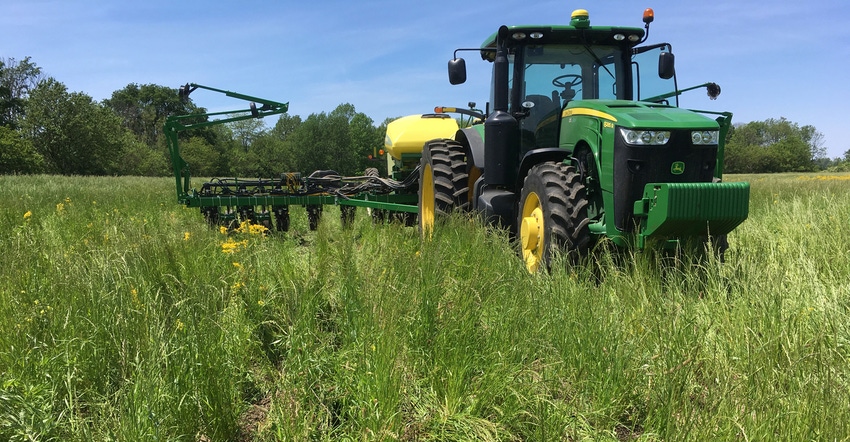March 9, 2018

By Clint Harrison
Is it better to drive a different way with the combine and planter with every pass or take the same route each time? Based on what experts say, whether it be with a grain cart, semi or tractor, you should stay in the same tracks every time to reduce soil compaction issues.
According to Ohio State University studies, 85% of soil compaction damage is done on the first pass across the field. That is true for both tracks and tires.
Soil compaction is most prevalent in heavy, finer-textured soils under wet conditions. In areas with soil compaction, you may have a reduced crop stand, less water infiltration and stressed root growth. This induces crop stress, especially in dry years, and lowers yield and profitability in these areas.
Soil compaction also diminishes the soil’s ability to store water by reducing the natural pore space within the soil profile. More soil compaction increases the soil’s bulk density, which requires planter and fertilizer openers to work harder, increasing energy consumption. You will use more diesel fuel in compacted fields.
Controlled traffic, as it can be referred to, is an important conservation component that will help you achieve a healthy soil environment when used alongside practices like no-till, nutrient management and cover crops. Keep in mind that to achieve a healthy soil environment, all aspects of the conservation system are important for a successful cropping system.
Equipment planning
I work with farmers who plan equipment passes so their planting, nutrient application, spraying and harvesting all follow the same tire or track paths. Precision technology is available to help farmers make sure they use the same traffic patterns with different field operations. Using controlled traffic can leave up to 80% of the field without ever seeing a tire track. Studies conducted in Western Australia, an area where farmers are leaders in the adoption of controlled traffic, have shown yield increases of 18% and above in wheat production. The most limiting factor in achieving controlled traffic is current equipment.
Planning must be done when purchasing new equipment or modifying existing equipment to come up with planter, spraying and harvesting equipment widths that minimize field traffic. Tire size, type and alignment of axles, along with possible upgrades in unloading augers and grain truck loading zones can be critical to the planning of a controlled traffic system. It will likely be easier to accomplish this task if you pay attention to tire size and whether wheels can be adjusted to varying widths before purchasing a piece of equipment.
Most farmers no longer farm with the John Deere A or the Farmall Super C. With 200-, 300- and 400-horsepower tractors out there on the land, soil compaction is a huge concern. My advice is to stay on the same route — every time.
Harrison is a district conservationist with the Natural Resources Conservation Service in Indiana. He is a contributor to the Salute Soil Health column and submits other articles on behalf of the Indiana Conservation Partnership.
You May Also Like




